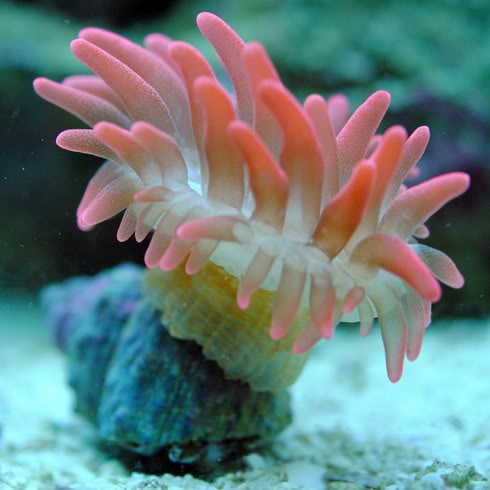It is not that R2R is in desperate need of another "anemone tank" build thread. It is not that I will be attempting to rear some difficult-to-keep species, that will prove that it is, in fact, possible to successfully raise such a species in captivity. It is not that I will employ some novel methodology, or technology, that will serve to revolutionize our approach to the hobby. It is not that this thread is aimed at divulging my vast knowledge of the reef-keeping hobby to the community. It is not that I expect to impress anyone with my less-than-world-class photography skills. Quite honestly, I am not entirely sure why I decided to create this thread. It just seemed like the thing to do, at the time. So, without further adieu, I present to you my ongoing experience with establishing and maintaining a glass box full of water, which will serve as the residence for a few common bubble-tip anemones and a couple of ordinary clownfish.
My experience in the hobby dates back to the year 2005. I had kept goldfish as a younger man, and really enjoyed having them around. Knowing this, my wonderful wife decided to purchase a 29 gallon aquarium, and presented it to me on my birthday. Shortly after I had introduced freshwater fish into it, my wife advised me that she wanted a saltwater tank. I simply could not understand her fascination, but agreed to look into the matter. And so "it" began. Until the year 2011, I bought, sold, or traded at least 20 different reef aquariums. My obsession led to my having as many as 9 tanks in our little one-bedroom apartment, at one point. Although my poor wife may have regretted ever sparking my interest, I loved every single moment I dedicated to the hobby...except for one.
By 2011, I had acquired what I consider to be a world-class mushroom collection. I cherished every one of them. I would say that I was pretty successful in propagating them, even recuperating a few dollars along the way, by selling their offspring. Then I got careless, and made a catastrophic mistake. I purchased 100 ricordea Florida from a dealer that I had purchased hundreds of mushrooms from, previously. The last batch he sent me happened to be contaminated with a very aggressive and toxic strain of dinoflagellates. Although I had beaten many contaminating species in the past, I was then facing a battle that I would ultimately lose. As a result, I abandoned the hobby.
In the not too distant past, I was freeing up space in the garage by selling equipment that I still had lying around. I picked up a piece of that equipment, and it struck me...I WANT TO DO IT ALL, AGAIN.
My experience in the hobby dates back to the year 2005. I had kept goldfish as a younger man, and really enjoyed having them around. Knowing this, my wonderful wife decided to purchase a 29 gallon aquarium, and presented it to me on my birthday. Shortly after I had introduced freshwater fish into it, my wife advised me that she wanted a saltwater tank. I simply could not understand her fascination, but agreed to look into the matter. And so "it" began. Until the year 2011, I bought, sold, or traded at least 20 different reef aquariums. My obsession led to my having as many as 9 tanks in our little one-bedroom apartment, at one point. Although my poor wife may have regretted ever sparking my interest, I loved every single moment I dedicated to the hobby...except for one.
By 2011, I had acquired what I consider to be a world-class mushroom collection. I cherished every one of them. I would say that I was pretty successful in propagating them, even recuperating a few dollars along the way, by selling their offspring. Then I got careless, and made a catastrophic mistake. I purchased 100 ricordea Florida from a dealer that I had purchased hundreds of mushrooms from, previously. The last batch he sent me happened to be contaminated with a very aggressive and toxic strain of dinoflagellates. Although I had beaten many contaminating species in the past, I was then facing a battle that I would ultimately lose. As a result, I abandoned the hobby.
In the not too distant past, I was freeing up space in the garage by selling equipment that I still had lying around. I picked up a piece of that equipment, and it struck me...I WANT TO DO IT ALL, AGAIN.






















